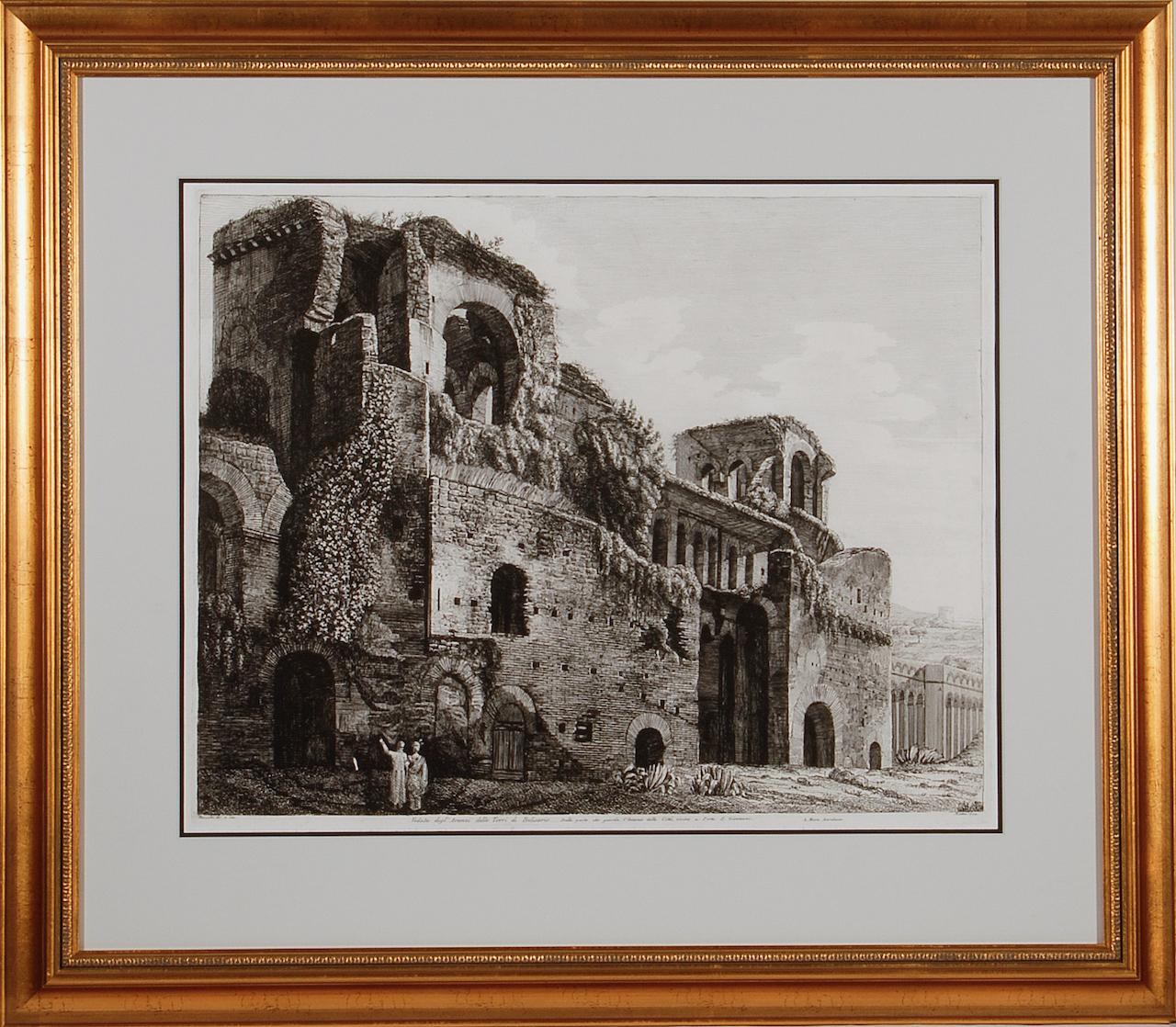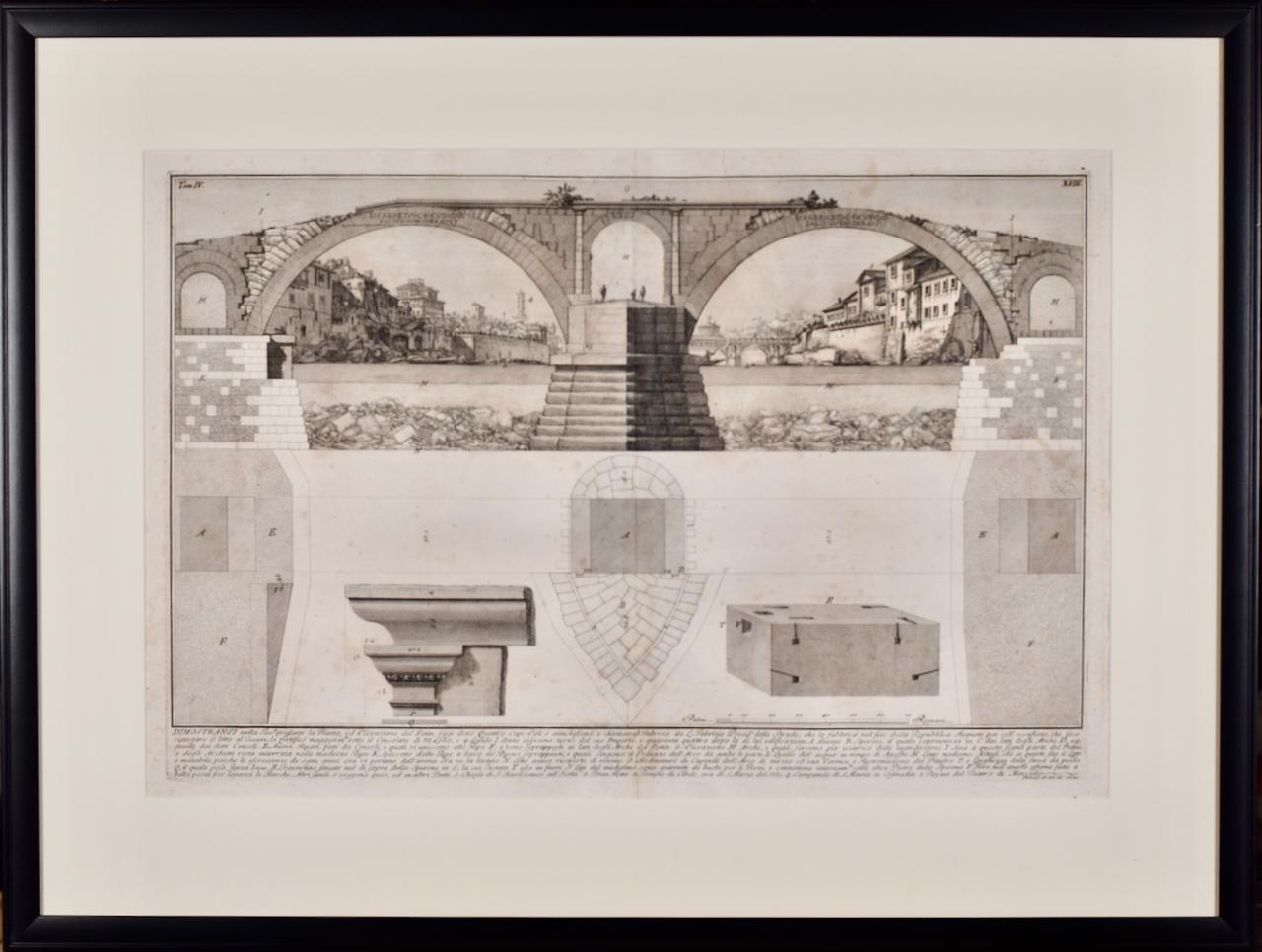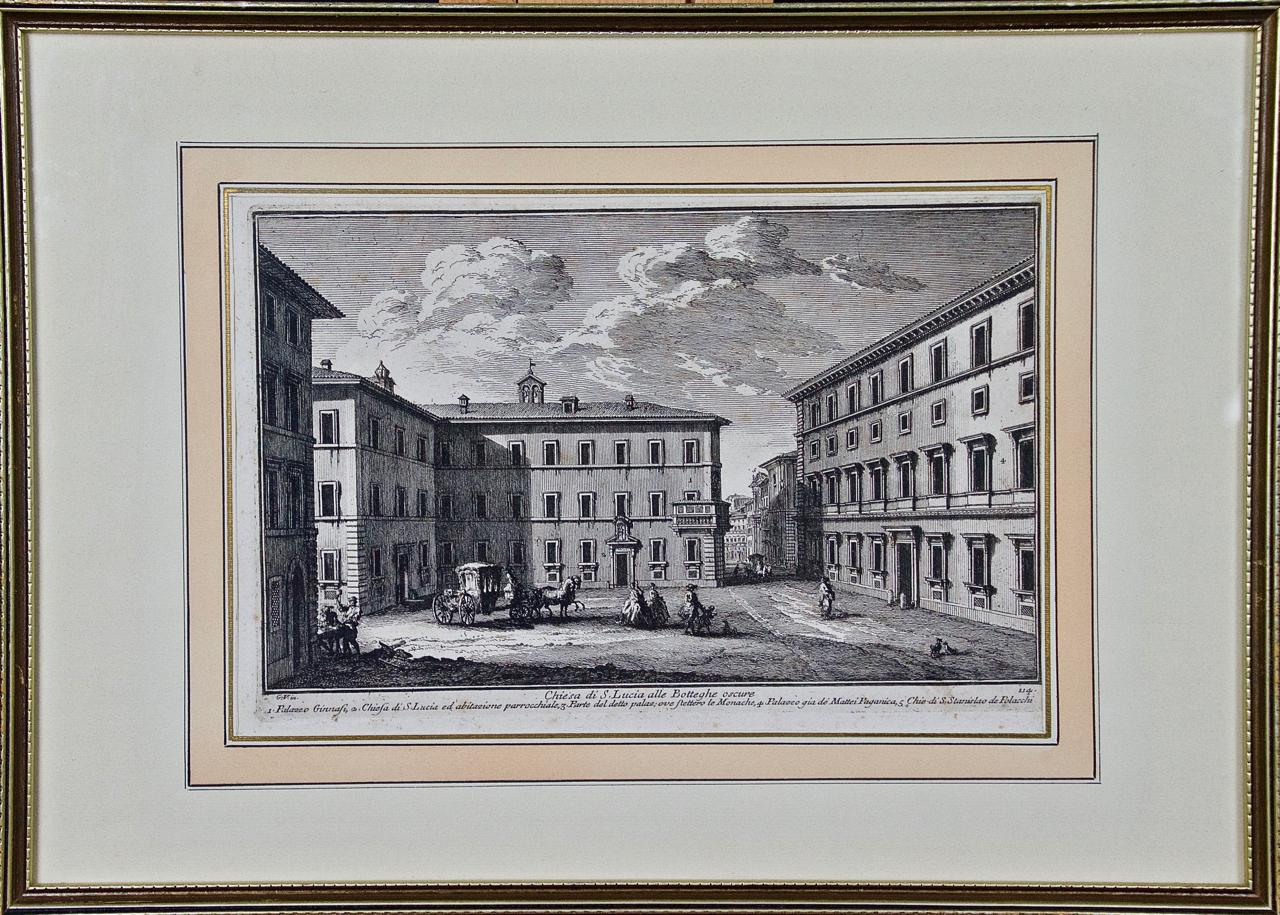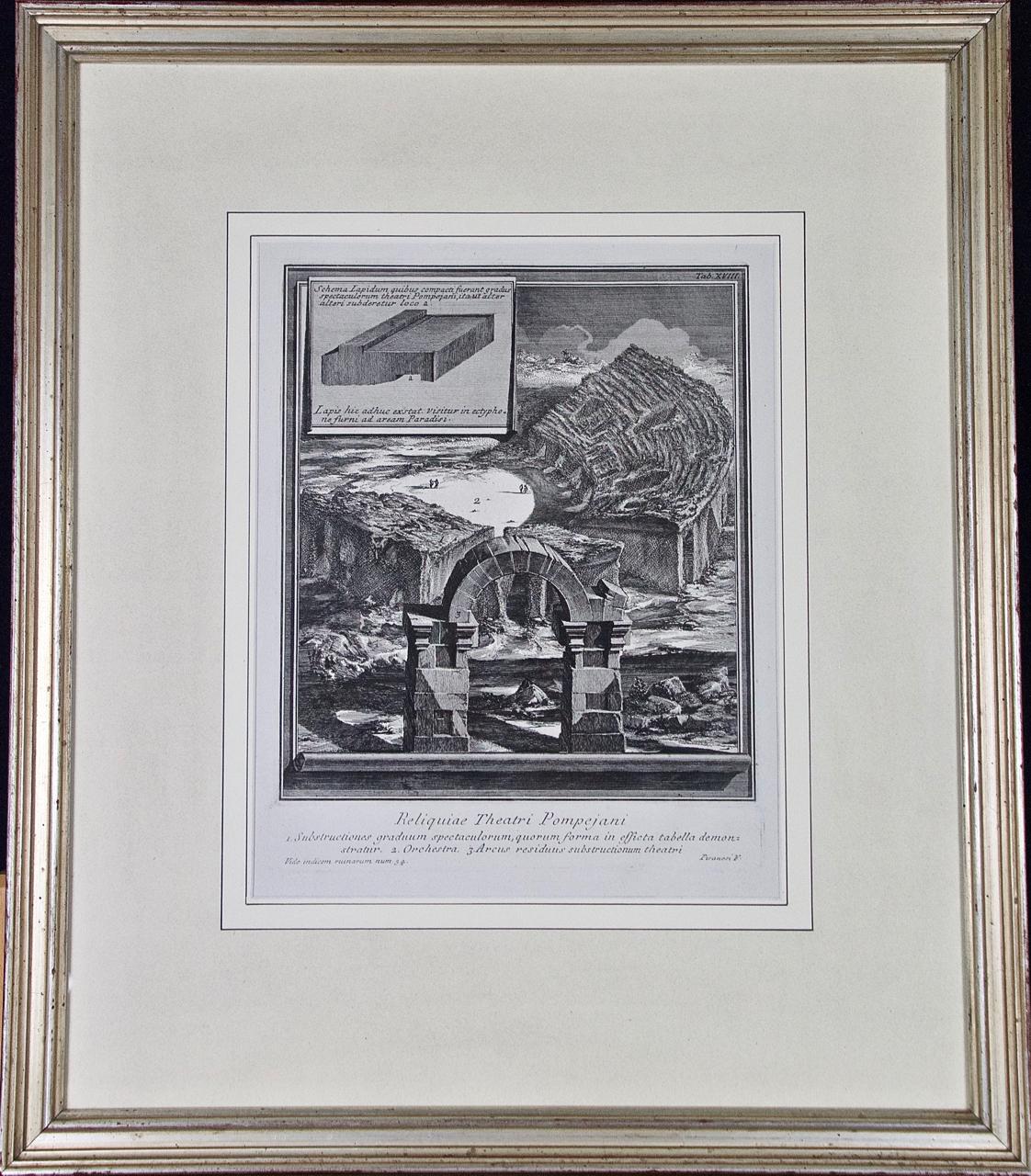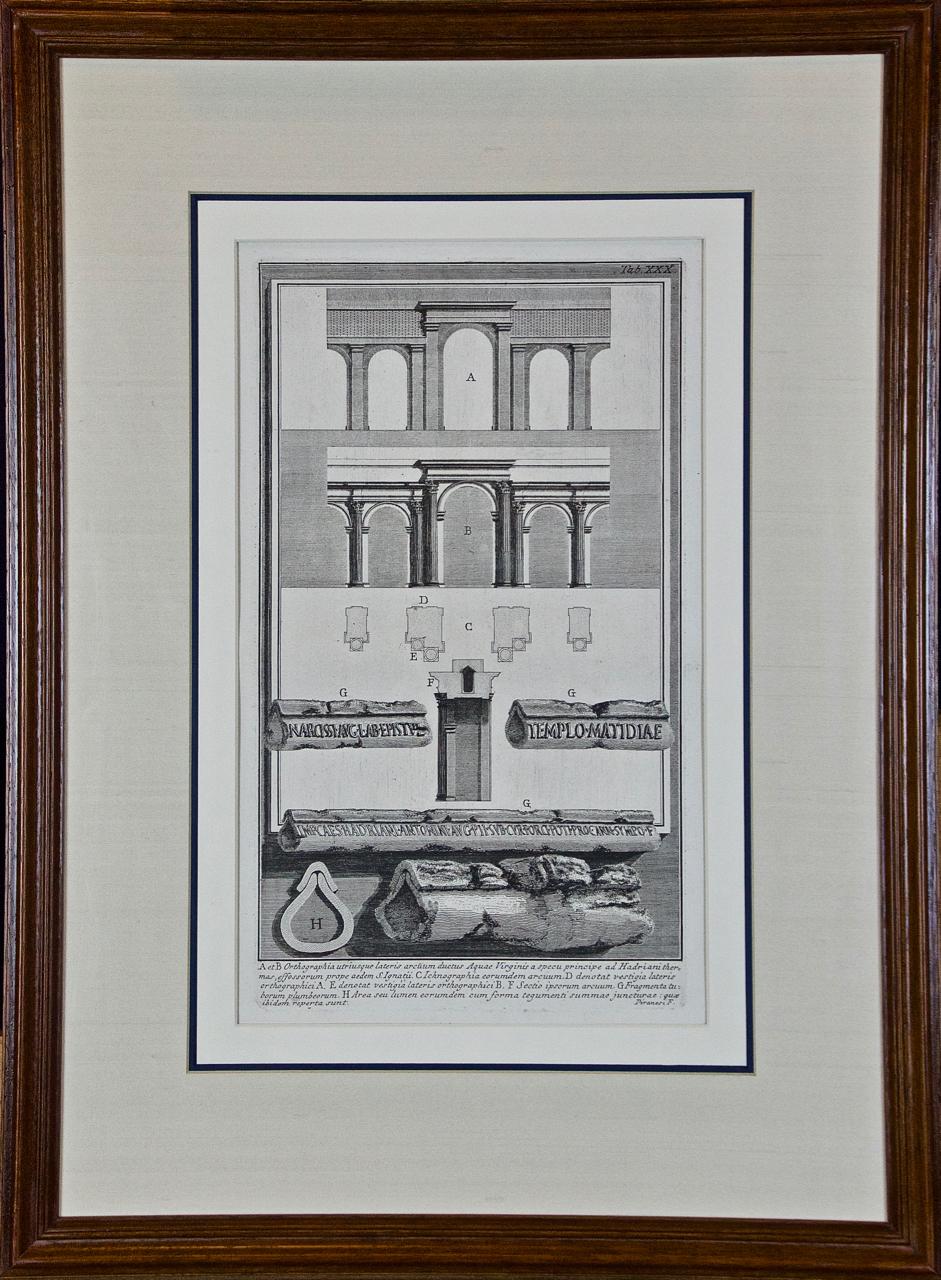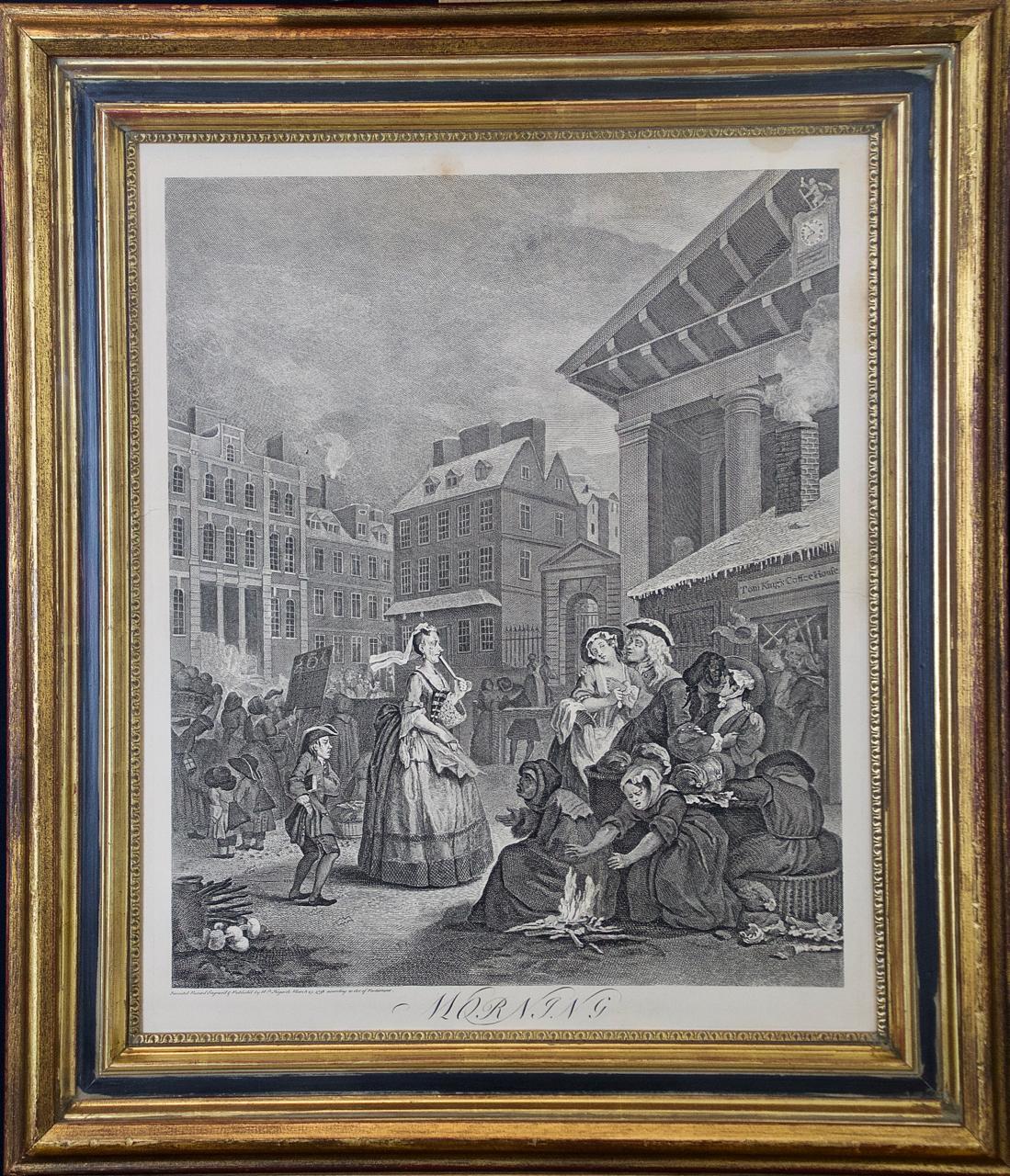Items Similar to "La Fuite en Egypte (The Flight into Egypt), " Etching by Claude Lorrain
Want more images or videos?
Request additional images or videos from the seller
1 of 8
Claude Lorrain"La Fuite en Egypte (The Flight into Egypt), " Etching by Claude Lorrain1630-33
1630-33
About the Item
"La Fuite en Egypte (The Flight into Egypt)" is an original etching by Claude Lorrain (Claude Gelee). This piece depicts the biblical story of Mary, Joseph, and the infant Jesus going onto Egypt. One edition of this print is in the collection of the British Museum. This was published by Mannocci #9.
4" x 6 1/2" art
18 3/8" x 20 7/8" frame
Biography
Claude Lorrain was born in c. 1604 into poverty in the town of Chamagne, Vosges in Lorraine—then the Duchy of Lorraine, an independent state until 1766 in northeastern France. He was one of five children. His name was Claude Gellée, however, he is known by the province in which he was born. He is often simply called Claude. Orphaned by the age of twelve, he went to live in Freiburg with an elder brother, Jean Gellée, a woodcarver. Claude went to Rome and then Naples from 1619 to 1621, where he apprenticed under Goffredo (Gottfried) Wals. He returned to Rome in April of 1625 and was apprenticed to Augustin Tassi.
Claude toured in Italy, France, and Germany, including his native Lorraine. Claude Deruet, painter to the Duke of Lorraine, kept him as an assistant for a year. He painted architectural subjects in Nancy at the Carmelite church.
In 1627, Claude returned to Rome. Two landscapes commissioned by Cardinal Bentivoglio earned him the patronage of Pope Urban VIII. From about 1627, he rapidly achieved fame as a painter of landscapes and seascapes. Apparently, he befriended his fellow Frenchman, Nicolas Poussin; together they would travel the Roman Campagna, sketching landscapes. Although both artists have been called landscape painters, they were history painters. In Poussin’s work, landscape is a backdrop for the figures that dominate the composition. Claude’s work is more landscape dominant, yet figures are always present.
To avoid the repetition of subjects and to combat copiers of his work, Claude made drawings of the pictures he sent to all his patrons. On the back of each drawing, he wrote the name of the purchaser. Called the Liber Veritatis (Book of Truth), the volume became a valuable study guide for Claude’s work.
Claude Lorrain died in Rome in November of 1682, leaving his wealth to his only surviving relatives, a nephew and an adopted daughter (possibly his niece).
Legacy
Landscape was not considered a serious subject for painting during Claude’s time. Despite his mastery of landscape and his legacy as one of the most accomplished landscape painters in Western art history, Claude was known during his time as a history painter, representing mythical and religious subjects. In seventeenth-century Europe, landscape, like still life and genre painting, reflected an aesthetic viewpoint that lacked moral seriousness. In the matter of the importance of landscape, Claude was prescient. He did not depict the uninhabited panoramas that were esteemed in later centuries, rather his works featured pastoral worlds populated by classical ruins or seascapes. To satisfy his patrons, his pictures include gods, heroes, and saints, even though his sketchbooks contain many drawings of the natural world. Joachim van Sandrart, a German artist and one of Claude’s biographers, described the artist’s working methods for capturing the essence of nature. He wrote that Claude “... studied his art with great seriousness and application; he tried by every means to penetrate nature, lying in the fields before the break of day and until night in order to learn to represent very exactly the red morning sky, sunrise and sunset and the evening hours. When he had well contemplated one or the other in the fields he immediately prepared his colours accordingly, returned home and applied them to the work he had in mind with much greater naturalness than anyone had ever done.”
John Constable described Claude Lorrain as “the most perfect landscape painter the world ever saw”, and declared that in Claude’s landscape “all is lovely- all amiable- all is amenity and repose; the calm sunshine of the heart.”
- Creator:Claude Lorrain (1604 - 1682, French)
- Creation Year:1630-33
- Dimensions:Height: 18.375 in (46.68 cm)Width: 20.875 in (53.03 cm)
- Medium:
- Movement & Style:
- Period:1630-1639
- Condition:
- Gallery Location:Milwaukee, WI
- Reference Number:
About the Seller
4.9
Platinum Seller
These expertly vetted sellers are 1stDibs' most experienced sellers and are rated highest by our customers.
Established in 1966
1stDibs seller since 2017
391 sales on 1stDibs
Typical response time: 1 hour
- ShippingRetrieving quote...Ships From: Milwaukee, WI
- Return PolicyA return for this item may be initiated within 14 days of delivery.
More From This SellerView All
- "Conversation Outside Castle, " an Etching by Jan Frans van BloemenBy Jan Frans van Bloemen (Orizzonte)Located in Milwaukee, WI"Conversation Outside Castle" is an original etching by Jan Frans van Bloemen. It depicts a number of figures just outside the majestic walls of a castle. These groups of figures are engaged in their own conversations. 9" x 6 3/4" art 21 5/8" x 19 3/8" frame Jan Frans van Bloemen (baptized 12 May 1662 - buried 13 June 1749) was a Flemish landscape painter mainly active in Rome. Here he was able to establish himself as the leading painter of views (vedute) of the Roman countryside depicted in the aesthetic of the classical landscape tradition. Van Bloemen predominantly painted classical landscapes, taking his inspiration from the Roman Campagna. His landscapes, with their recession through a series of planes, soft, warm lightning and classical and religious subject matter, drew on the examples of artists such as Claude Lorrain and Gaspard Dughet. His paintings are exquisitely imbued with that "difficult-to-define pastoral ambience" which helped to make him such a great painter in the eyes of his contemporaries. The technique and subjects of the work of Jan Frans van Bloemen are also related to painters such as Jan Asselijn...Category
18th Century Old Masters Landscape Prints
MaterialsEtching
- "Mother & Child Near Statues, " Etching by Jan Frans van Bloemen (Orizzonte)By Jan Frans van Bloemen (Orizzonte)Located in Milwaukee, WI"Mother & Child Near Statues" is an original etching by Jan Frans van Bloemen. It depicts two figures, a mother and child pair, next two two classical statues. There are other figures in this park-like environment. 9 1/4" x 6 3/4" art 21 5/8" x 19 3/8" frame Jan Frans van Bloemen (baptized 12 May 1662 - buried 13 June 1749) was a Flemish landscape painter mainly active in Rome. Here he was able to establish himself as the leading painter of views (vedute) of the Roman countryside depicted in the aesthetic of the classical landscape tradition. Van Bloemen predominantly painted classical landscapes, taking his inspiration from the Roman Campagna. His landscapes, with their recession through a series of planes, soft, warm lightning and classical and religious subject matter, drew on the examples of artists such as Claude Lorrain and Gaspard Dughet. His paintings are exquisitely imbued with that "difficult-to-define pastoral ambience" which helped to make him such a great painter in the eyes of his contemporaries. The technique and subjects of the work of Jan Frans van Bloemen are also related to painters such as Jan Asselijn...Category
18th Century Old Masters Landscape Prints
MaterialsEtching
- "Figures Outside the Monastery, " Original Etching by Jan Frans van BloemenBy Jan Frans van Bloemen (Orizzonte)Located in Milwaukee, WI"Figures Outside the Monastery" is an original etching by Jan Frans van Bloemen. It depicts people on the path to a church. 7" x 10 1/4" art 19 1/4" x 22 5/8" frame Jan Frans van Bloemen (baptized 12 May 1662 - buried 13 June 1749) was a Flemish landscape painter mainly active in Rome. Here he was able to establish himself as the leading painter of views (vedute) of the Roman countryside depicted in the aesthetic of the classical landscape tradition. Van Bloemen predominantly painted classical landscapes, taking his inspiration from the Roman Campagna. His landscapes, with their recession through a series of planes, soft, warm lightning and classical and religious subject matter, drew on the examples of artists such as Claude Lorrain and Gaspard Dughet. His paintings are exquisitely imbued with that "difficult-to-define pastoral ambience" which helped to make him such a great painter in the eyes of his contemporaries. The technique and subjects of the work of Jan Frans van Bloemen are also related to painters such as Jan Asselijn, Thomas Wyck...Category
18th Century Old Masters Landscape Prints
MaterialsEtching
- "Figures at the Obelisk, " Original Etching Landscape by Jan Frans van BloemenBy Jan Frans van Bloemen (Orizzonte)Located in Milwaukee, WI"Figures at the Obelisk" is an original etching by Jan Frans van Bloemen. It depicts two people conversing in front of a monument. Behind them, an expansive landscape sprawls. 9 1/4" x 6 3/4" art 21 3/4" x 19 3/8" frame Jan Frans van Bloemen (baptized 12 May 1662 - buried 13 June 1749) was a Flemish landscape painter mainly active in Rome. Here he was able to establish himself as the leading painter of views (vedute) of the Roman countryside depicted in the aesthetic of the classical landscape tradition. Van Bloemen predominantly painted classical landscapes, taking his inspiration from the Roman Campagna. His landscapes, with their recession through a series of planes, soft, warm lightning and classical and religious subject matter, drew on the examples of artists such as Claude Lorrain and Gaspard Dughet. His paintings are exquisitely imbued with that "difficult-to-define pastoral ambience" which helped to make him such a great painter in the eyes of his contemporaries. The technique and subjects of the work of Jan Frans van Bloemen are also related to painters such as Jan Asselijn, Thomas Wyck...Category
18th Century Old Masters Landscape Prints
MaterialsEtching
- "Le Temps, Apollon et les Saisons (Time, Apollo and the Seasons)"By Claude LorrainLocated in Milwaukee, WI"Le Temps, Apollon, et les Saisons (Time, Apollo, and the Seasons)" is an etching by Claude Gellée (Le Lorrain). This etching is the Fifth state (A). This state is also in collections in Paris (BN, L, PP) and Washington; Mannocci cat. no. 43. The inscription reads: "Apollo in atto di obedire al tempo. La Primavera a cominciare il ballo. Lestate no manca del suo calore. L'aurunno colsuo licore / Seguita. Linvernno tiene la sua staggione, Claudio Gillee inven.Fec.Roma 1662 con licenza de super." A powerful example of Claude's staging of landscape in the classical manner is the etching "Time, Apollo, and the Seasons," done in 1662 after Poussin's painting of 1624-1636, "Dance to the Music of Time...Category
Mid-17th Century Old Masters Landscape Prints
MaterialsEtching
- "Shepherd and Shepherdess Conversing in a Landscape "By Claude LorrainLocated in Milwaukee, WI"Shepherd and Shepherdess Conversing in a Landscape (Berger et Bergere Conversant)" is an etching by Claude Gellee (Le Lorrain). This etching is in the collections of the Metropolita...Category
Mid-17th Century Old Masters Landscape Prints
MaterialsEtching
You May Also Like
- Ruins of the Roman Baths of Belisarius: A 19th C. Etching by Luigi RossiniBy Luigi RossiniLocated in Alamo, CAThis early 19th century etching entitled "Veduta degl' Avanzi delle Torri di Belisario Dalla parte che guarda l' Interno della Città, vicino a Porta S. Giovanni, A. Mura Aureliane" (...Category
1820s Old Masters Landscape Prints
MaterialsEtching
- Fabricius (Ponte Cestio) Bridge : Framed 18th C. Piranesi Architectural EtchingBy Giovanni Battista PiranesiLocated in Alamo, CAThis framed 18th century etching by Giovanni Battista Piranesi is entitled "Dimostransi nella Tav. presente la Pianta, ed Elevazione del Ponte, oggi detto Quattro Capi egli è antichissimo, e chiamavasi Fabrizio da L. Fabrizio Presid. delle Strade, che lo fabbrico' nel fine della Repubblica. "(The Plan and Elevation of the Bridge, today called Quattro Capi. The architect is very ancient, and was called Fabrizio da L. Fabrizio Presid. delle Strade, who built it at the end of the Republic). This is plate 18 in volume 4 of Piranesi's "Le antichita romane opera di Giambatista Piranesi architetto veneziano" (Roman antiquities by Giambatista Piranesi Venetian architect). It was published in Rome in 1756-1757. This etching depicts the plan and elevation of the bridge now called the Ponte dei Quattoro Capi or Ponte Cestio (Bridge of the Four Heads), which in antiquity was called the Bridge of Fabricius after L. Fabricius, the Superintendant of the Streets who built it at the end of the Republic, around 62 BC. It was also been known in the Middle Ages as ‘Ponte Giudeo’ (Bridge of the Jews). The bridge crossed from the left bank or northeast side of the Tiber River to Tiber Island...Category
1750s Old Masters Landscape Prints
MaterialsEtching
- 18th Century Etching of "Chiesa di S. Lucia" in Rome by Giuseppe VasiBy Giuseppe VasiLocated in Alamo, CAThis 18th century etching is entitled "Chiesa di S. Lucia alle Botteghe Oscure" by Giuseppe Vasi was published in Rome in 1747 in Vasi's 'Magnificenze di Roma Antica e Moderna', whic...Category
Mid-18th Century Old Masters Landscape Prints
MaterialsEtching
- Piranesi 18th C. Etching "Reliquiae Theartri Pompejani" an Ancient Roman TheaterBy Giovanni Battista PiranesiLocated in Alamo, CAThis a framed Giovanni Battista Piranesi (1720-1778) etching entitled "Reliquiae Theartri Pompejani" (Remains of the Theatre of Pompey) from "Il Campo Marzio dell'Antica Roma" (The C...Category
Mid-18th Century Old Masters Landscape Prints
MaterialsEtching
- Piranesi Etching of Hadrian's Ancient Roman Aqueduct and Baths, "Aquae Virginis"By Giovanni Battista PiranesiLocated in Alamo, CAThis is a framed Giovanni Battista Piranesi (1720-1778) etching entitled "Orthographia utriusque lateris arcuum ductus Aquae Virginis a specu principe ad Hadriani thermas, effossorum...Category
Mid-18th Century Old Masters Landscape Prints
MaterialsEtching
- Four Framed Hogarth Engravings "Four Times of the Day"By William HogarthLocated in Alamo, CAThe four plates in this "Four Times of the Day" set were created utilizing both engraving and etching techniques by William Hogarth in 1738. Hogarth's original copper plates were refurbished where needed by James Heath and these engravings were republished in London in 1822 by Braddock, Cradock & Joy. This was the last time Hogarth's original copper plates were used for printing. Most were melted down during World War I for the construction of bombs. Printed upon early nineteenth century wove paper and with large, full margins as published by William Heath in 1822. The inscription below each print reads "Invented Painted & Engraved by Wm. Hogarth & Publish'd March 25. 1738 according to Act of Parliament". These large folio sized "Four Times of the Day" engravings/etchings are presented in complex gold-colored wood frames with black bands and scalloped gold inner trim. A majority of each thick impressive frame is covered with glass applied near the outer edge. Each frame measures 25.75" high, 22.25" wide and 1.88" deep. There are a few small dents in the edge of these frames, which are otherwise in very good condition. "Morning" has two focal areas of discoloration in the upper margin and some discoloration in the right margin, a short tear in the left margin and a short tear or crease in the right margin. "Noon" has a spot in the upper margin that extends into the upper image, but it is otherwise in very good condition. "Evening" has a faint spot in the upper margin, but it is otherwise in very good condition. "Night" is in excellent condition. The "Four Times of the Day" series is in the collection of many major museums, including: The British Museum, The Metropolitan Museum of Art, The Tate Museum, The Chicago Art Institute and The Victoria and Albert Museum. Through this series Hogarth is portraying early 18th century London street life at "Four Times of the Day". His characters are exhibiting their personalities, quircks, strange activities, but he also wants to draw attention the disparities between the wealthy aristocracy and the common working class. Plate 1, "Morning" depicts morning in Covent Garden in the winter in front of Tom King...Category
Mid-18th Century Old Masters Landscape Prints
MaterialsEngraving, Etching
